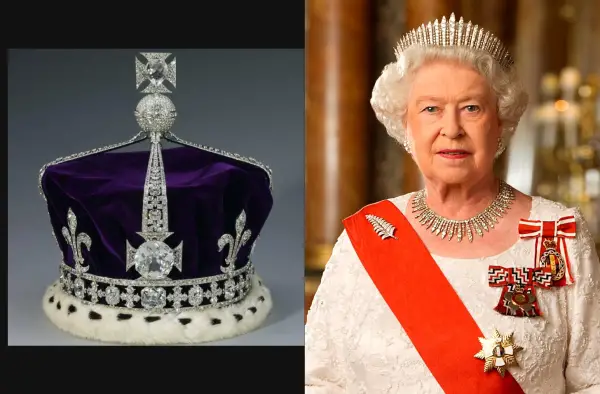Former Colonies Of The British Empire Demand Return of Diamonds Worth $800 Million From The Crown Jewels
Tags: News

The demise of the longest-serving British Monarch, Queen Elizabeth II, is an undoubtedly mournful event. However, the death heralds an unprecedented question over the role and presence of the British Empire in today’s world – particularly, their material possessions.
SUBSCRIBE TO THE TRUTH THEORY YOUTUBE CHANNEL, CLICK HERE
Queen Elizabeth’s demise at the age of 96 at Scotland’s Balmoral Castle on September 8th had made many crowds the London streets surrounding Buckingham Palace. Loving respect and condolences have flooded Windsor Castle as well as social media. However, there’s another reaction to the event that stems from the British Empire’s long colonial history.
The British Empire’s list of colonies is long and includes some of the biggest modern-day countries like India. As such, during their reign over the colonial territories, the British Empire has been accused of “looting” national treasures of the territories and using them to adorn their own royalty.
One of the biggest examples in this regard is the Koh-i-Noor diamond. The 105-carat diamond is among the world’s biggest and clears cut diamonds, and was acquired from India. It has been the centerpiece for the crown of the female monarchs of the British Empire for well over a century. To this day, it still sits there.
The second prominent example is the Great Star of Africa, which was acquired from South Africa. Known as the Cullinan I, it adorns the Sovereign’s Sceptre. Both of these crown jewels are presently on display at the Museum at the Tower of London.
The Controversial History Of The British Empire’s Crown Jewels
The Koh-i-Noor’s worth is estimated to be about $140 to $400 million. However, because of its historical significance, it is impossible to evaluate its worth accurately. Its history is believed to begin about 5 millennia ago. A script in Sanskrit is believed to have mentioned it and called it the “Syamantaka”.
After that, the exact ownership is unknown. However, as per historical reports, the Rajas of Malwa are believed to have owned it until 1304. Following that, Alaudin Khilji, the Emperor of Delhi, is believed to be the next owner. For the following 3 centuries, since 1339, the diamond’s residence is believed to have been Samarkand.
This finally changed in 1849, when the forces of the British Empire conquered the territory of Punjab, and officially claimed it as under the rule of the British East India Company. Subsequently, the diamond found its way to Britain and was gifted to Queen Victoria in 1850.
Also Read: The Egyptian Connection To The American Flag
She had the royal jewelers cut it into a centerpiece for her crown. The Queen proudly wore it as well, till her death. However, she left behind a curious instruction – only a female monarch or the head of the state’s wife is to wear the jewel. After her demise, it remained as part of the British Crown Jewels, even though India gained independence from British Rule.
So, Who Owns It Now?
According to the website of the Tower of London, the Crown Jewels are the British Monarch’s “most powerful symbols”. As such, to the British, they hold immense cultural and religious significance. The monarchy, themselves, has maintained that the diamond was “gifted” to them.
However, India, as well as Afghanistan and Pakistan have all repeatedly contested the jewel’s ownership with the British Empire. With the demise of Queen Elizabeth, the calls have risen once more to return the diamond to their rightful owners, for these nations believe the diamond was “looted” from them. Similar to the Koh-i-Noor, South Africa also wants the Great Star of Africa back, which the African Archives claim was “stolen” from their mines in 1905. According to the same tweet, this diamond has an estimated $400 million cost as well.
With the change in the guard of the British Monarchy after an immense amount of time, perhaps such calls will become even louder. Even more so, perhaps, because the modern world seems to have moved so far away from the grandeur of monarchy.
Image credits: Wojciech Kocot, CC BY-SA 4.0, via Wikimedia Commons
Photograph taken by Julian Calder for Governor-General of New Zealand, CC BY 4.0, via Wikimedia Commons
Leave Comment: